Best For | Ideal for small businesses and entrepreneurs looking for a comprehensive marketing, sales, and CRM solution. | Ideal for businesses seeking scalable solutions for inbound marketing, CRM, and sales automation. |
Price | Starting at $24/month | Starting at $15/month |
Features | All-in-one marketing automation | Scalable CRM platform |
Pros | All-in-one business management | User-friendly interface |
Cons | Steep learning curve for beginners | Can get expensive at scale |
Choosing the right CRM and marketing automation platform is crucial for businesses seeking to streamline their operations, expand their customer base, and enhance marketing performance.
Two of the most popular names in the CRM space today are Ontraport and HubSpot. Both platforms offer powerful features, but their philosophies and approaches differ significantly, making them better suited for different types of businesses.
In this Ontraport vs HubSpot comparison, we will explore their core philosophies, ideal user types, feature sets, pricing models, and much more.
The goal is to help you determine which platform is best suited for your business, considering its unique needs, size, and growth trajectory.
Ontraport vs HubSpot
What Is Ontraport?
Before diving into the detailed comparison, it’s important to understand what these two platforms represent:
Ontraport is often considered an all-in-one entrepreneurial operating system.
It focuses on integrating key business functions, such as marketing automation, CRM, sales, payments, and membership management, into a single platform.
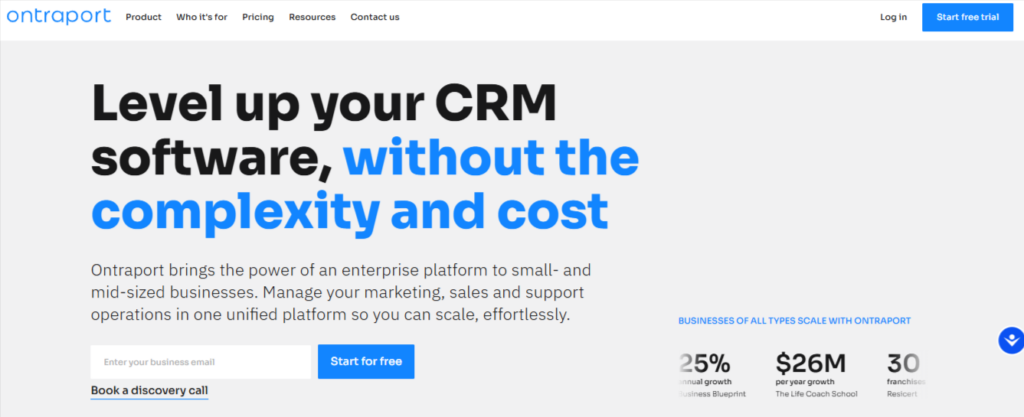
It is especially favored by small businesses, entrepreneurs, and info-marketers who need an affordable, streamlined solution that brings everything under one roof.
What Is HubSpot?
HubSpot, on the other hand, is known for its inbound marketing ecosystem.
HubSpot’s suite of tools is divided into several Hubs (Marketing, Sales, Service, and CRM), designed to cater to businesses of all sizes.
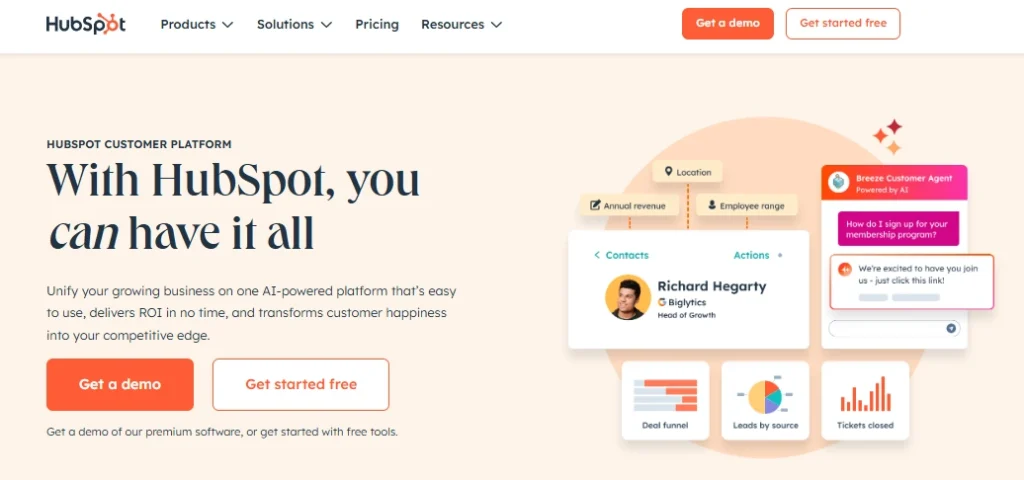
From small startups to enterprise-level companies, HubSpot scales well with your business. Its CRM for small business approach and broad functionality across departments are key selling points.
In this post, we’ll compare both platforms across critical factors such as ease of use, CRM capabilities, marketing automation features, sales tools, e-commerce integration, reporting, and more.
Features Comparison: Ontraport vs HubSpot
1. Core Philosophy & Ideal User: Who Are They Built For?
Ontraport:
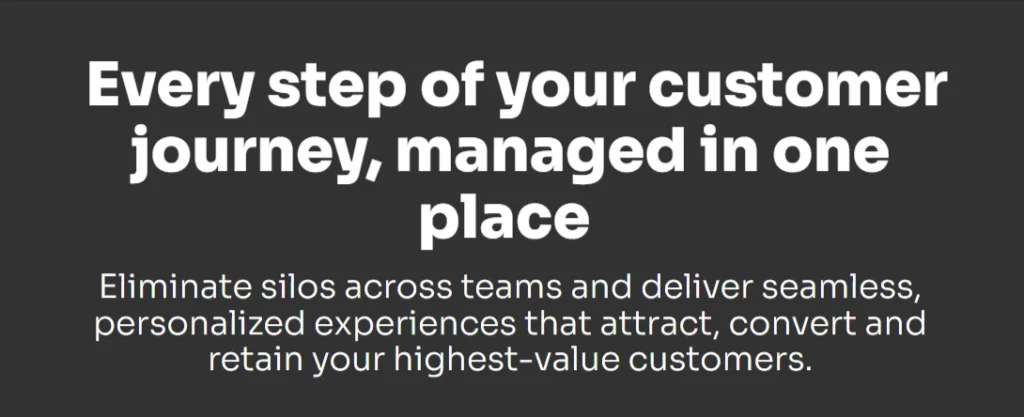
Ontraport’s philosophy is centered around simplifying business management for entrepreneurs, small businesses, and mid-sized teams. It was built with the goal of integrating multiple business functions into one seamless platform.
Ideal for coaches, consultants, solopreneurs, and small businesses who need CRM, marketing automation, sales, payments, and membership management in a single solution.
It’s best suited for businesses that operate in niche markets or online service industries (like info-marketing, e-commerce, and education).
HubSpot:
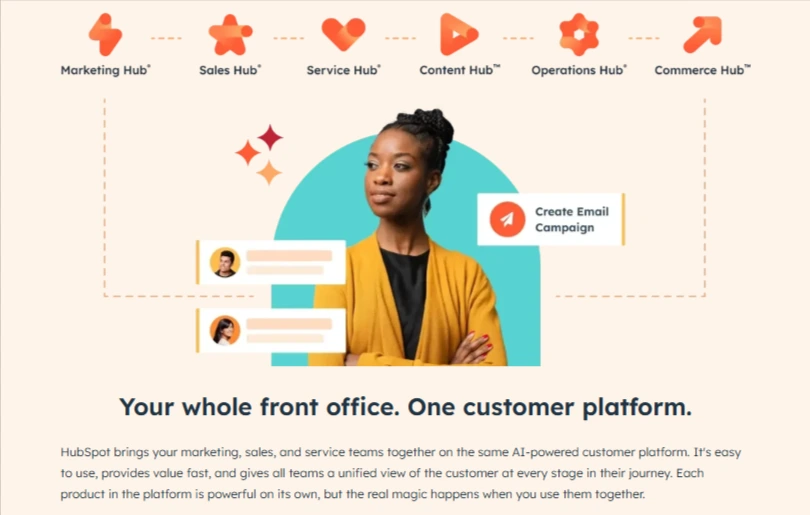
HubSpot’s philosophy revolves around scalable growth for businesses of all sizes. It’s designed to help companies generate inbound leads, nurture them, and manage customer relationships over the long term.
It’s particularly well-suited for companies focused on inbound marketing, lead generation, and content-driven sales processes.
Ideal for businesses seeking flexible tools that can scale with their growth. It serves a wide range of users, from small businesses to enterprise-level organizations.
2. Ease of Use, Onboarding & Learning Curve
Ontraport:
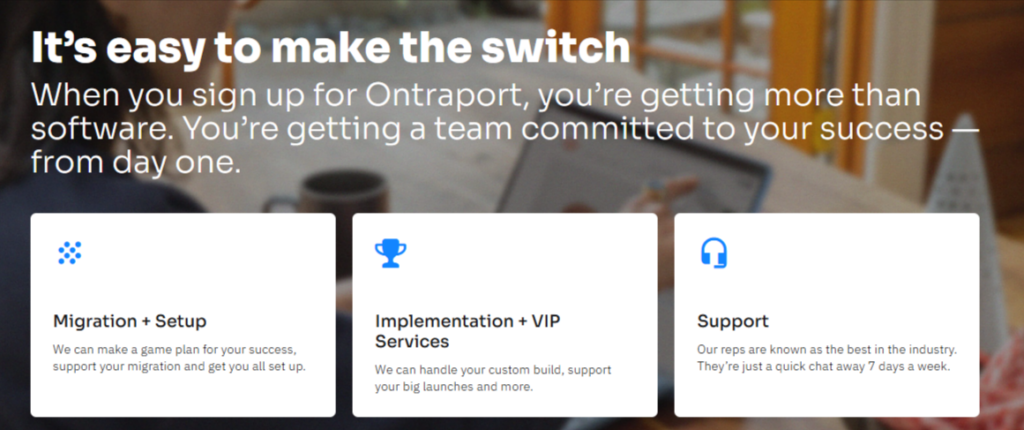
Ontraport’s interface is clean and visual, which I appreciated when setting up a campaign for a small e-commerce client. Its drag-and-drop campaign builder made it easy to map out a customer journey, from lead capture to purchase.
However, the initial setup can feel daunting if you’re new to automation. I spent a few hours helping my client customize their CRM fields and automation workflows. Although Ontraport offers templates, you’ll need some tech-savviness to maximize them.
Onboarding is self-paced with a 14-day trial, but I’ve found their support team responsive when I got stuck.
HubSpot:
HubSpot’s user experience is polished, which is why it’s often recommended as a HubSpot alternative for beginners. I set up a lead nurturing campaign for a mid-sized agency in a day, thanks to its intuitive dashboard and pre-built workflows.
The free CRM is a great starting point, but as you add Hubs (Marketing, Sales, etc.), the complexity creeps in. I’ve seen clients struggle with navigating multiple Hubs and features, especially if they’re not tech-savvy.
HubSpot offers robust onboarding, including free courses, but you might need paid onboarding for Professional plans, which can be pricey.
Takeaway: Ontraport is simpler for focused setups but has a learning curve for automation. HubSpot is more intuitive initially but grows complex with scale.
3. CRM Functionality
Ontraport:
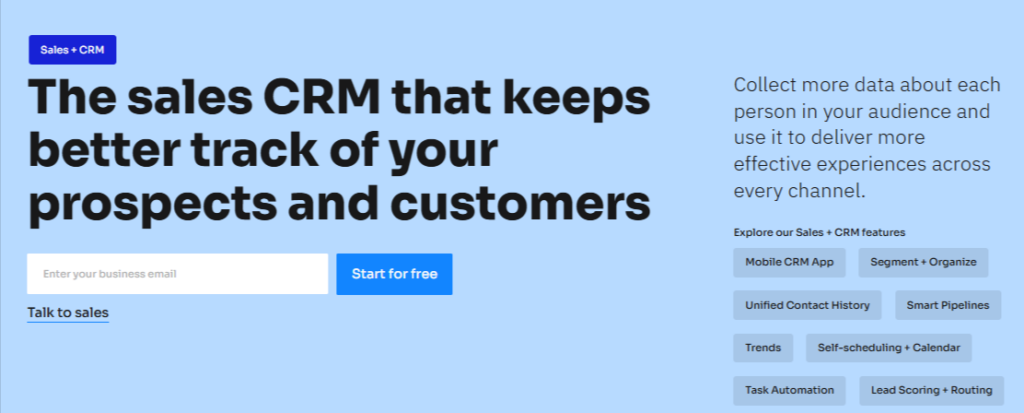
Ontraport’s CRM serves as a central hub for all customer data, which I found invaluable for a consulting client. It tracks everything—leads, purchases, email opens, even cart abandonment.
I set up custom fields to segment their audience by interest, which made targeted campaigns a breeze. Lead scoring is available but basic compared to HubSpot. Pipeline management is both visual and functional for small teams, although it may not be as robust for complex sales cycles.
HubSpot:
HubSpot’s CRM is a powerhouse, especially for B2B businesses. I worked with a SaaS company that used HubSpot to manage 50,000 contacts, leveraging its free CRM to track interactions across email, calls, and website visits.

The lead scoring is sophisticated, letting us prioritize high-value leads automatically. Pipeline management in the Sales Hub is top-notch—I set up multiple pipelines for different products, with drag-and-drop deal tracking. However, advanced CRM features often require paid plans.
Takeaway: Ontraport’s CRM is great for entrepreneurs needing a unified view, while HubSpot excels for larger teams with complex sales pipeline management.
4. Marketing Automation
Ontraport:
Ontraport’s marketing automation software shines with its visual campaign builder. I used it to create a drip campaign for a course creator, triggering emails based on user actions like video views.
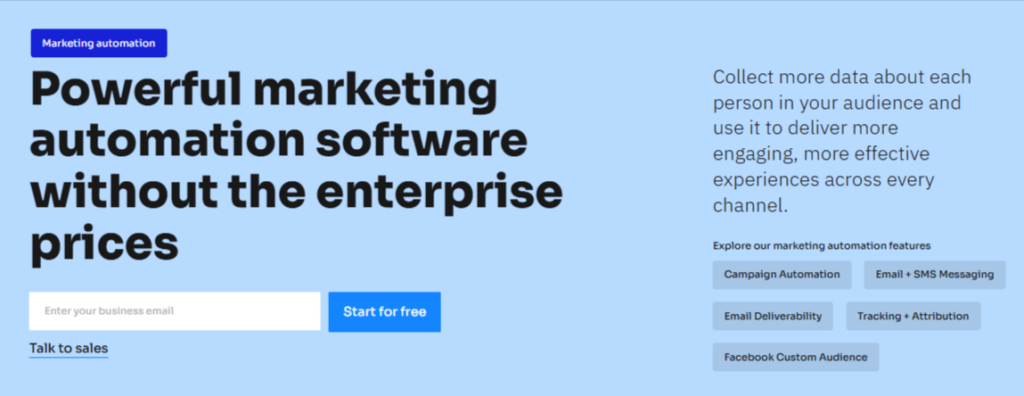
The platform also includes landing pages and forms, which I customized without a developer. A/B testing is built-in—I tested email subject lines and saw a 10% open rate increase. Ontraport’s automation feels tightly integrated, covering email, SMS, and even postcards, which was a fun touch for a client’s offline campaign.
HubSpot:
HubSpot’s Marketing Hub is a beast for email marketing automation. I set up a workflow for a B2B client that nurtured leads across email, social ads, and chat, all triggered by website behavior.

The drag-and-drop email builder is easy to use, though I’ve found the templates a bit basic compared to Ontraport’s more flexible designs. HubSpot’s A/B testing and analytics are deeper—I optimized a landing page and increased conversions by 15%.
However, automation features are limited in the free plan, and you’ll need at least the Starter plan ($20/month) for basic workflows.
Takeaway: Ontraport offers integrated automation for smaller teams; HubSpot provides multichannel power for broader campaigns.
5. Sales Tools
Ontraport:
Ontraport’s sales tools are built into its platform, which I found sufficient for a coaching business. I automated follow-up emails and tracked deals in the pipeline, which helped my client close 20% more sales.
It lacks advanced features like forecasting, but for small teams, it gets the job done. Meeting scheduling is available via integrations like Calendly through Zapier.
HubSpot:
HubSpot’s Sales Hub is a game-changer for larger teams. I used it for a mid-sized agency, setting up playbooks, e-signatures, and automated follow-ups that saved hours.
The meeting scheduler is native—I booked 10 client calls in a week without back-and-forth emails. Sales forecasting and lead scoring are robust but require Professional plans ($90/month per user). If you’re a small business, the free CRM plus Starter plan might suffice.
Takeaway: Ontraport is practical for solo or small teams; HubSpot’s Sales Hub is better for scaling sales operations.
6. E-commerce, Payments & Membership
Ontraport:
This is where Ontraport shines. I helped a course creator set up a membership site with secure payment processing through Stripe, complete with automated renewals and cart abandonment emails.
Ontraport’s e-commerce tools include coupon codes and order bumps, which increased my client’s average order value by 15%. It’s a one-stop shop for creators who need all-in-one business platforms.
HubSpot:
HubSpot isn’t built for e-commerce or memberships. I worked with a client who needed payment processing, and we had to integrate Stripe via the Commerce Hub, which starts at $30/month.
Membership sites require third-party tools, adding complexity. HubSpot focuses more on lead gen than product sales, so it’s not ideal for creators.
Takeaway: Ontraport wins for e-commerce and membership sites; HubSpot requires integrations.
7. Reporting & Analytics
Ontraport:
Ontraport’s analytics give a clear view of campaign performance. I tracked a client’s email campaign, seeing which links got clicks and where leads dropped off.
The dashboard is customizable, but it lacks the depth of HubSpot. For small businesses, it’s enough to make data-driven decisions without overwhelming you.
HubSpot:
HubSpot’s reporting is next-level. I built a custom dashboard for a B2B client, tracking everything from email opens to deal stages.
The Marketing Hub Professional plan ($890/month) unlocks advanced reports, like ROI attribution, which helped us optimize ad spend. It’s overkill for small teams but invaluable for data-driven businesses.
Takeaway: Ontraport offers simple, actionable insights; HubSpot provides deep analytics for larger operations.
8. Integrations & App Marketplace
Ontraport:
Ontraport integrates with essentials like Stripe, PayPal, and Zapier, which I used to connect a client’s webinar tool. It has an open API for custom integrations, but the ecosystem is smaller—about 20 native integrations.
It’s enough for most entrepreneurs, but it lacks the breadth of HubSpot.
HubSpot:
HubSpot’s marketplace is massive, with 1,500+ apps. I connected a client’s HubSpot to Slack, Zoom, and QuickBooks seamlessly, streamlining their workflow.
The integrations are a key reason HubSpot suits businesses with diverse tech stacks, though some require API knowledge for setup.
Takeaway: Ontraport covers the basics; HubSpot’s marketplace is unmatched for variety.
Pricing Models & Scalability
Ontraport:
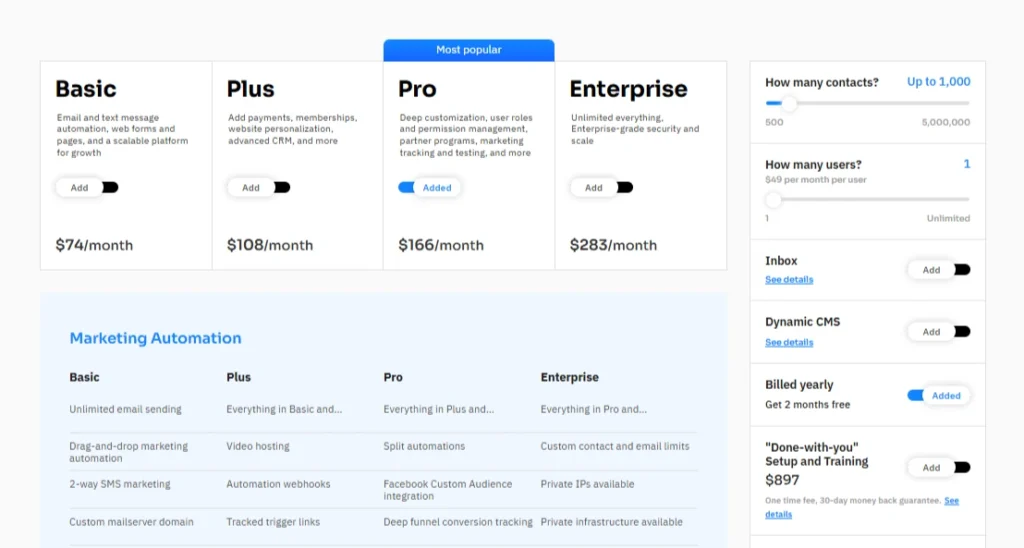
Ontraport’s pricing starts at $74/month for 1,000 contacts, including all features—CRM, automation, e-commerce, and more. The Pro plan at $166/month supports three users, while the Enterprise plan at $283/month.
I found it cost-effective for a small e-commerce client, but the cost of contact limits can add up. There are no hidden onboarding fees, and you can upgrade or downgrade anytime.
HubSpot:
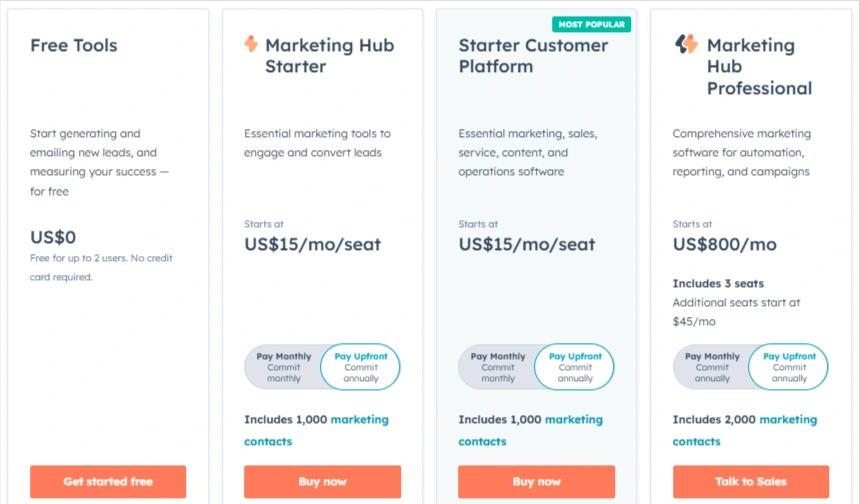
HubSpot’s pricing is modular, which I’ve seen confuse clients. The free CRM is generous (up to 1,000,000 contacts), but advanced features require paid Hubs.
The Marketing Hub Starter is $15/month for 1,000 contacts, but Professional jumps to $800/month. Sales Hub Professional is $90/month per user, and onboarding fees (often $5,000+) apply. I calculated costs for a mid-sized team using Marketing and Sales Hubs, and it hit $18,000/year—steep compared to Ontraport’s $1,788/year for similar functionality.
Takeaway: Ontraport’s pricing is more predictable; HubSpot scales fast but gets expensive.
Customer Support & Community
Ontraport: Personal and Reliable
Ontraport’s support is 7 days a week via email and chat, which I found responsive when troubleshooting a client’s automation. Their community is active—I got a campaign tip from their Facebook group. Documentation is solid, with templates to guide you.
HubSpot: Extensive but Tiered
HubSpot offers email, chat, and phone support, but phone access requires Professional plans. I used their chat to fix a workflow issue in minutes, and their free courses are a goldmine. The community is larger, with forums and tutorials, but free plan users get limited support.
Takeaway: Ontraport’s support feels more personal; HubSpot’s is broader but tier-dependent.
Use Cases: Where Each Shines
- Course Creators & Coaches: Ontraport’s membership and payment tools are unbeatable. I helped a coach launch a course, automating everything from sign-ups to renewals.
- B2B & Mid-Sized Teams: HubSpot’s inbound focus and Sales Hub shine here. I used it for a SaaS company to scale content marketing and sales pipelines.
- Small Businesses on a Budget: Ontraport’s all-in-one approach saves costs. HubSpot’s free CRM suits startups, but costs rise quickly.
- E-commerce: Ontraport’s native e-commerce features outshine HubSpot, which needs integrations.
FAQ related to HubSpot Vs Ontraport
Which is Cheaper: Ontraport or HubSpot?
Ontraport starts at $79/month with all features, while HubSpot’s free CRM is great, but paid plans like Marketing Hub Professional ($890/month) get pricey fast. For small teams, Ontraport is often more affordable.
Is Ontraport Better for Small Businesses Than HubSpot?
Yes, if you need integrated e-commerce and membership features. I’ve seen Ontraport simplify workflows for small teams, while HubSpot’s complexity suits larger businesses.
Can HubSpot Handle E-commerce Like Ontraport?
Not natively. HubSpot requires integrations like Stripe via the Commerce Hub, while Ontraport has built-in payment processing and cart features.
Which Platform Has Better Marketing Automation?
Both are strong, but HubSpot’s multichannel automation (email, ads, chat) is more robust for larger campaigns. Ontraport’s visual builder is simpler for entrepreneurs.
Quick Links:
Conclusion:
So, Ontraport vs HubSpot—which should you choose? It boils down to your business model and goals.
Ontraport, the Entrepreneurial All-in-One OS, is ideal for solopreneurs, coaches, and small businesses needing a streamlined system for marketing, sales, and e-commerce.
I’ve seen it transform workflows for clients who want everything in one place without the complexity.
HubSpot, the Inbound Ecosystem Giant, is perfect for growing businesses, B2B companies, and teams that thrive on inbound marketing and need a scalable platform with deep integrations.
Consider your priorities: if you want simplicity and integrated e-commerce, Ontraport’s your pick. If you need a robust inbound strategy and don’t mind the cost, HubSpot’s ecosystem is unmatched.
Both offer free trials—Ontraport’s 14-day trial and HubSpot’s free CRM—so test them out. For me, Ontraport powers my smaller projects, while HubSpot drives my larger campaigns. What’s your next move?


